ABOUT US
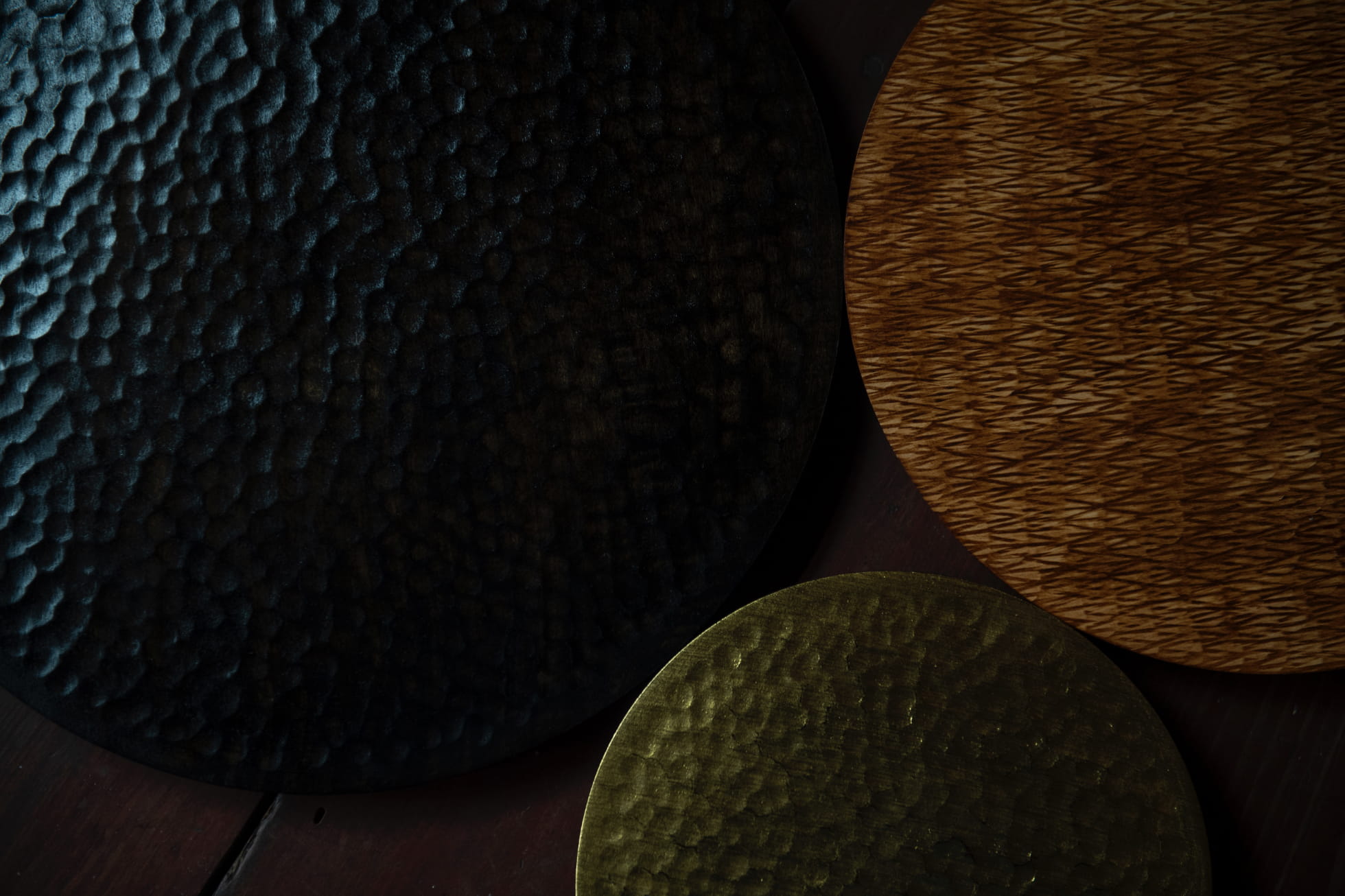
始
鍛木皿誕生のきっかけは、鉄作家として活躍するIRON CHOP代表の澤田健勝さんと、株式会社駒井漆器製作所代表取締役の駒井康亨が共通の趣味の釣りを通して出会い、意気投合したことからでした。「澤田さんの工房へ遊びに行き、金槌で鉄を叩く様子を見て、ふと、高岡漆器には彫刻塗という伝統技法があるが、彫らずに叩くことでも、美しい陰影をつくりだせるのではないかと考えました」と、駒井代表は振り返ります。1940年に創業し、漆器の木地から塗りまでを一貫して手がける駒井漆器。伝統の継承にとどまらず、つねに、新たな漆器の道を切り開いてきました。「自分が本当に欲しいものをつくる。中途半端なものはいらない」という信念のもと、これまでにない技法での器づくりが始まりました。
Tanmokuzara was born when Sawada Kensho, a metalcraft artist and representative of IRON CHOP, met Komai Yasuyuki, a representative director of Komai Shikki Seisakusho, a lacquer company. They actually met through their shared hobby—fishing. Komai said “the idea occurred to me when I went to Sawada’s workshop and saw him hammering iron. Takaoka lacquerware is traditionally engraved and lacquered, but I realized we could create beautiful shades without engraving, simply by using a mallet to create patterns.” Established in 1940, Komai’s business handles all aspects of the process, from creation of the wood base to lacquer finishing. They have continued to seek new ways of using and promoting the lacquerware traditions they inherited. Their philosophy is “Create the things which you truly want. Nothing half-hearted.”
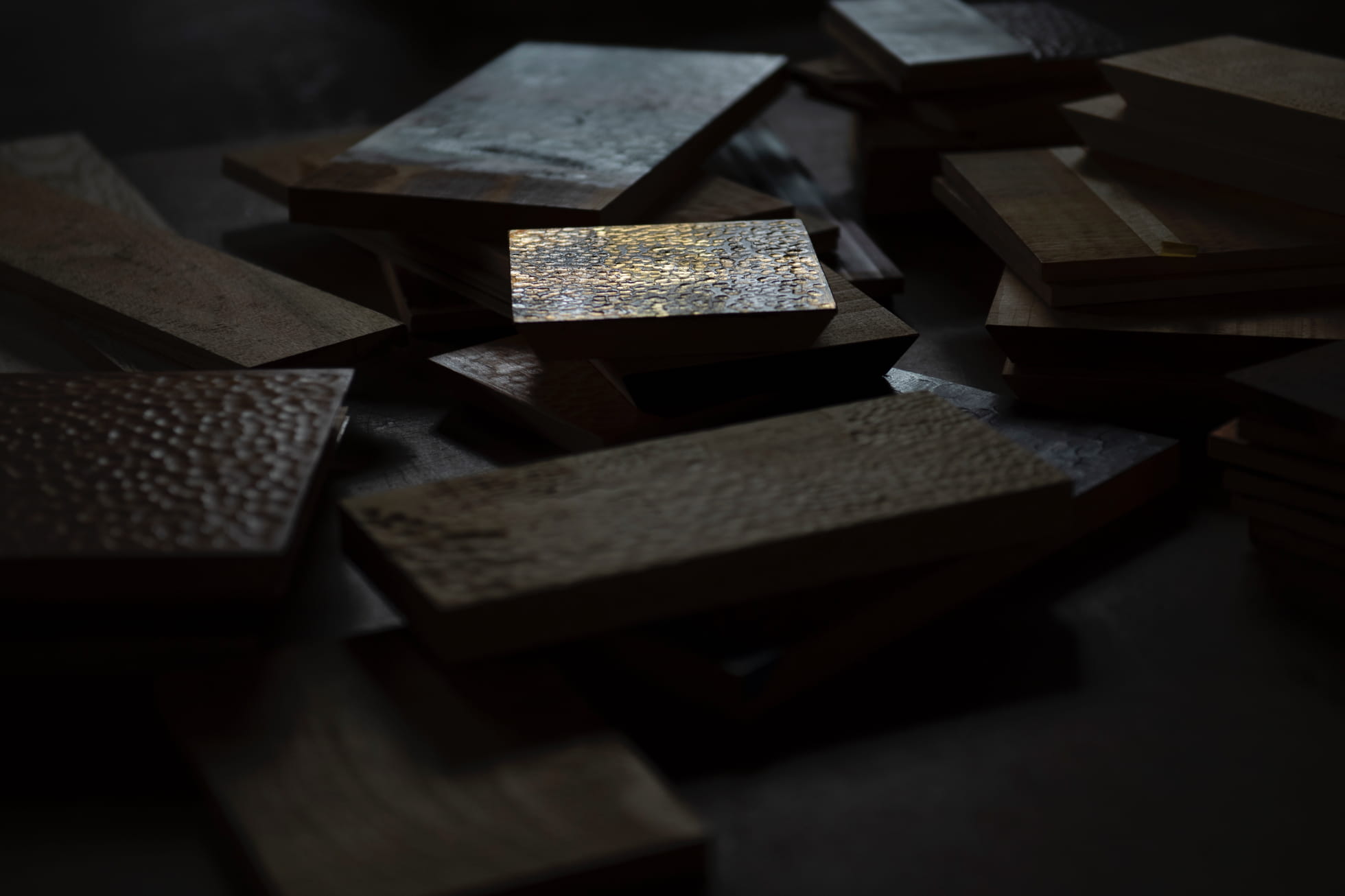
木
鉄作家の澤田さんと、何十種類もの木を金槌や様々な道具で叩いて試作を繰り返すことに。スギは柔らか過ぎて、ケヤキは硬過ぎて不向き。試行錯誤の末、一番いい槌目や表情が出たのがトチノキでした。鍛木皿の木地づくりを手がけるのは、国の伝統的工芸品「庄川挽物木地」の伝統工芸士です。樹齢約100年のトチノキを、木目の美しさを生かすため原木を縦に板挽きして自然乾燥へ。さらに、大まかに形をつくり再び乾燥へ。仕上げはロクロを使い、工芸士自らつくった鉋(かんな)で丁寧に挽きます。鉋枕(かんなまくら)と呼ばれる、自由に動く木の台と鉋を同時につかみ、そこを支点に刃の位置や角度を自在に調整します。滑らかに木が削られていく様子は、神業とも言える美しさがあります。
Alongside Sawada, Komai began testing various types of wood by beating them with hammers and other tools. Japanese cedar was too soft, and zelkova too hard. After trial and error, the best and most expressive base was Japanese horse chestnut. The Tanmokuzara bases are made by traditional craftsmen of Shogawa Wood Turning. The 100-year-old horse chestnut is cut into boards and dried naturally to preserve its beauty. It is then textured, and dried again. Artisans use a lathe for the finishing touches, carefully shaping the wood with a custom-built plane. They also take a “plane pillow”, a freely moving wooden base, and use it as a fulcrum to adjust the position and angle of the blade. The smooth and subtle shaving of the wood produces an otherworldly beauty.
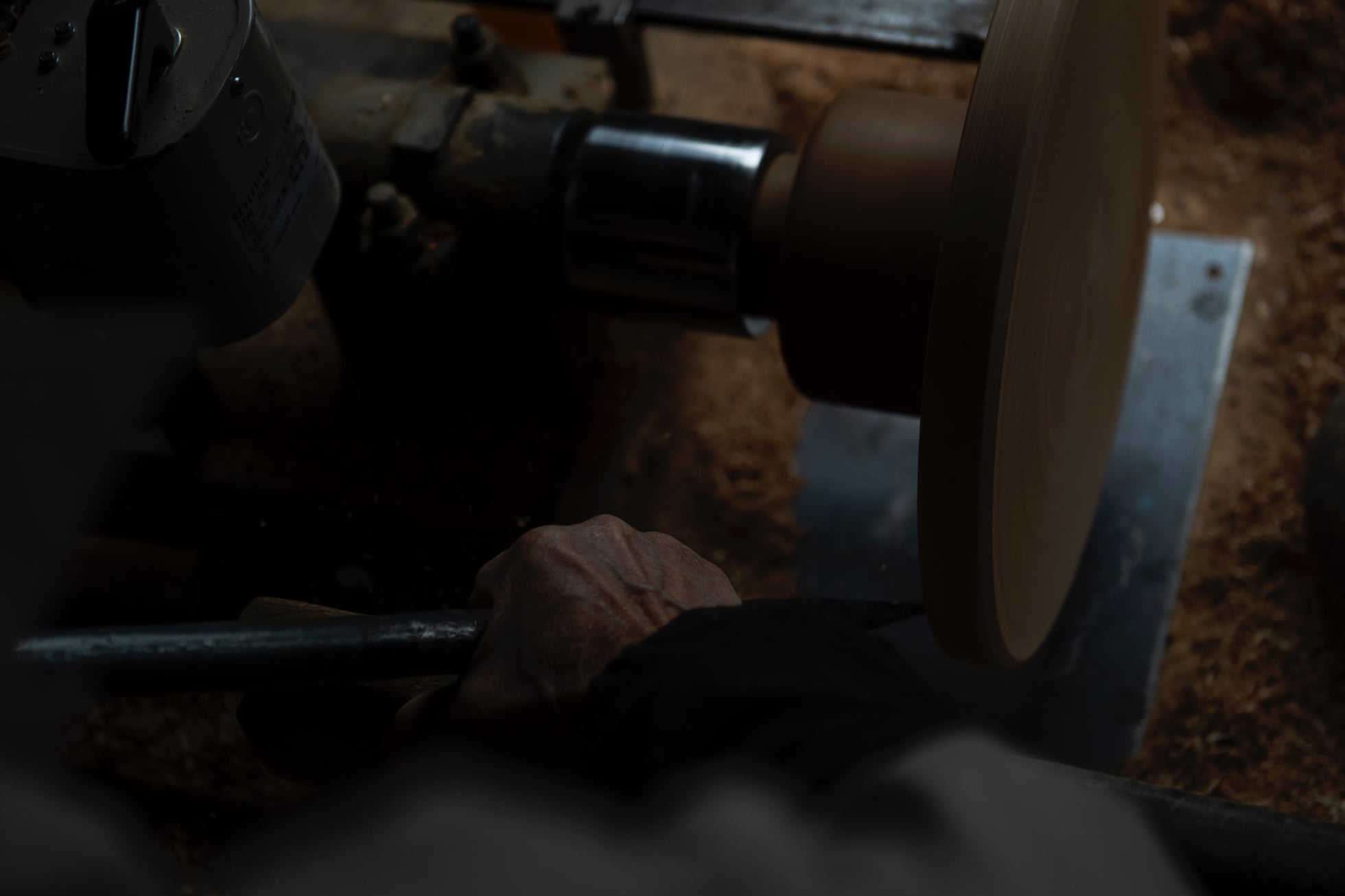
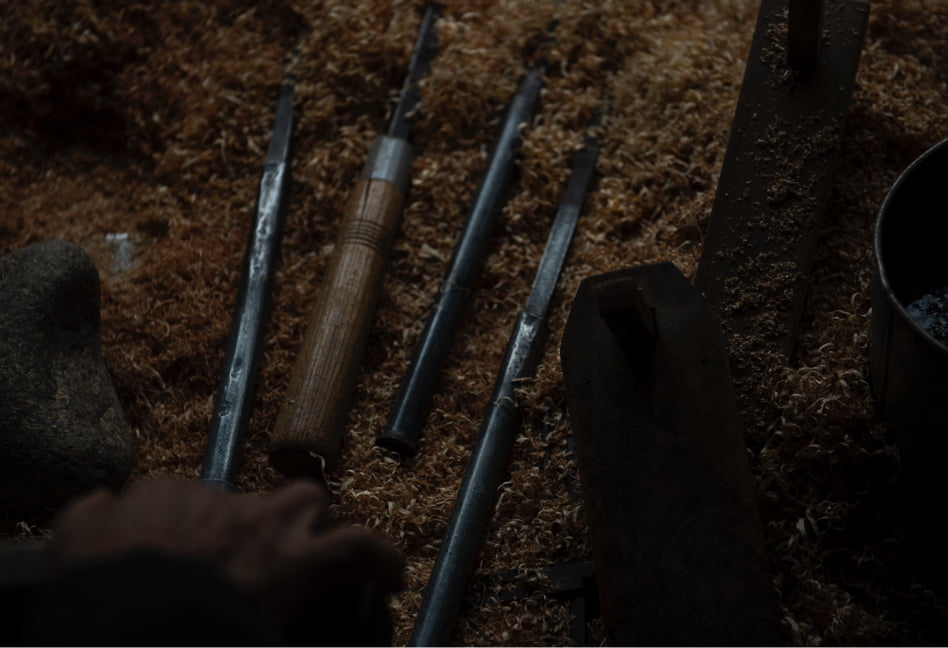
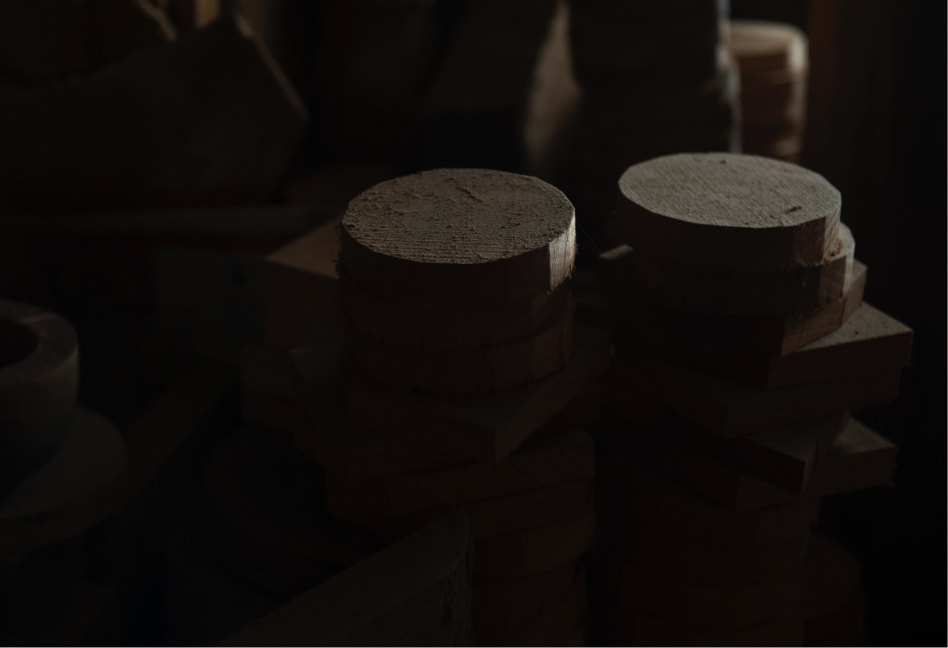
鍛
単に槌目を綺麗に揃えるのは簡単ですが、ランダムで風合いのある槌目をつけるには、細心の注意と高い技術が必要に。一枚ごとに木地は性質が異なり、同じ一枚でも部分ごとに硬さ、柔らかさが違うためです。そこで、試作段階からもう一人、駒井代表が協力を求めたのが、寺院の「おりん」や「すずがみ」を手掛けている(有)シマタニ昇龍工房の鍛金職人、島谷好徳さんです。鍛木皿の「たまゆき」と「さみだれ」は、島谷さんが普段「すずがみ」をつくるときと同じ金槌を用い、同じ模様がつけれられています。島谷さん、澤田さんともに「金属は叩くと金槌が跳ね返って叩きやすいのですが、木は力を吸収してしまい、金属の5倍ぐらいの力が必要。とても難しく大変な作業です」と語ります。
It is relatively easy to merely hammer neatly, but it takes great care and skill to create the random and natural patterns of our Tanmokuzara. Every base is different, since even within one piece, there are varying levels of hardness and softness to the wood. After the prototype phase, Komai sought the assistance of Shimatani Yoshinori, a craftsman and representative of Shimatani Syoryu Koubou, a company that produces Orin and Suzugami for temples. The “Tamayuki” and “Samidare” Tanmokuzara are made using the same hammer and pattern that Shimatani uses to make Suzugami. Both Shimatani and Sawada agree that unlike metal which is easy to shape, wood absorbs the force and the hammer bounces back on impact, so it requires five times as much power to create the pattern. It is tricky and difficult work.
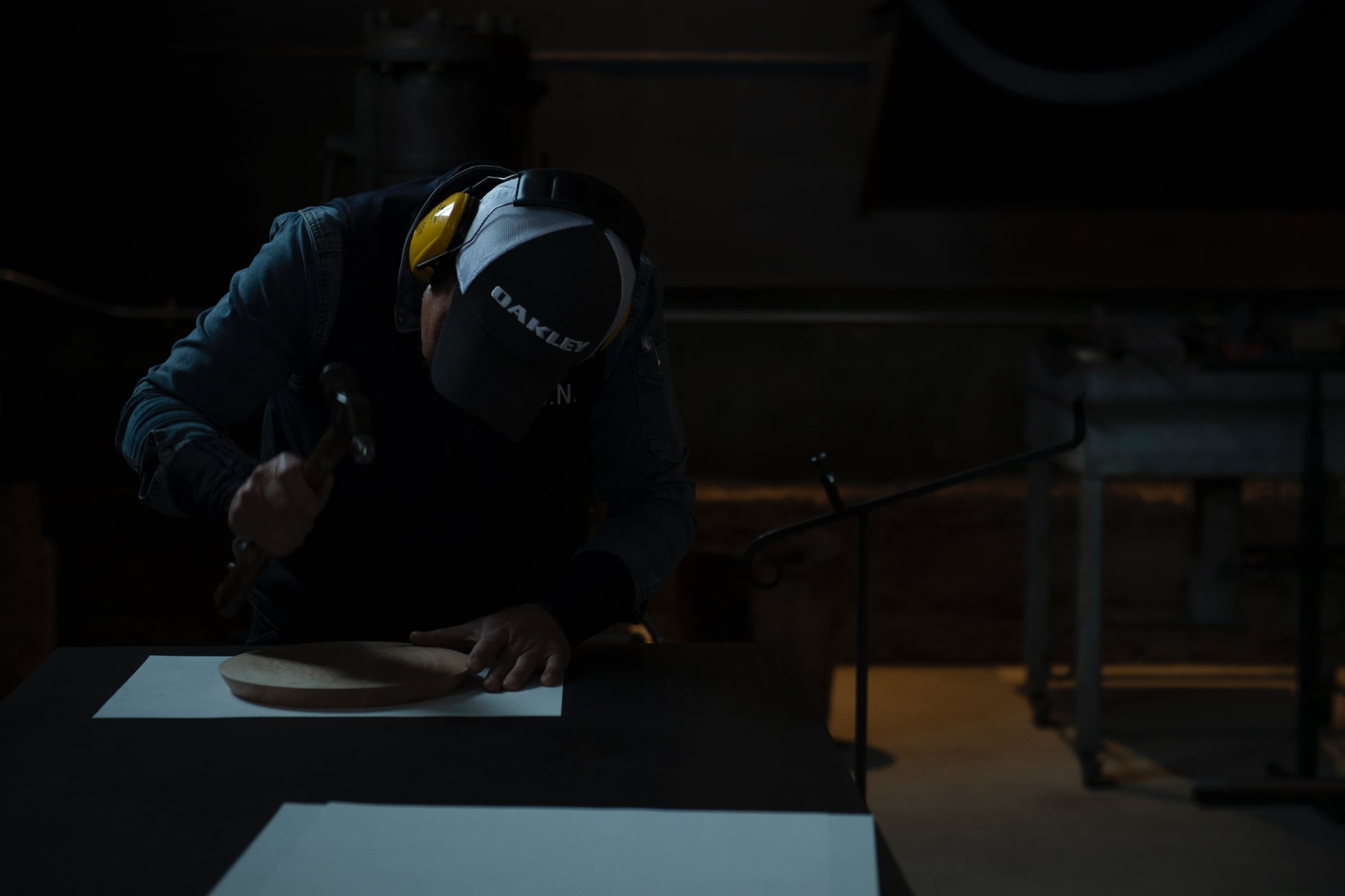
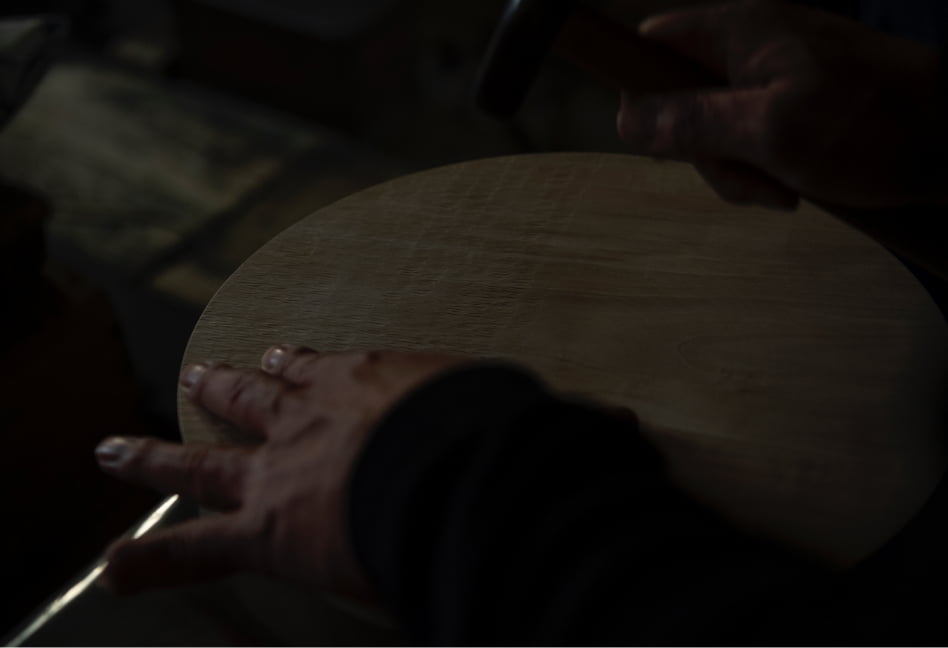
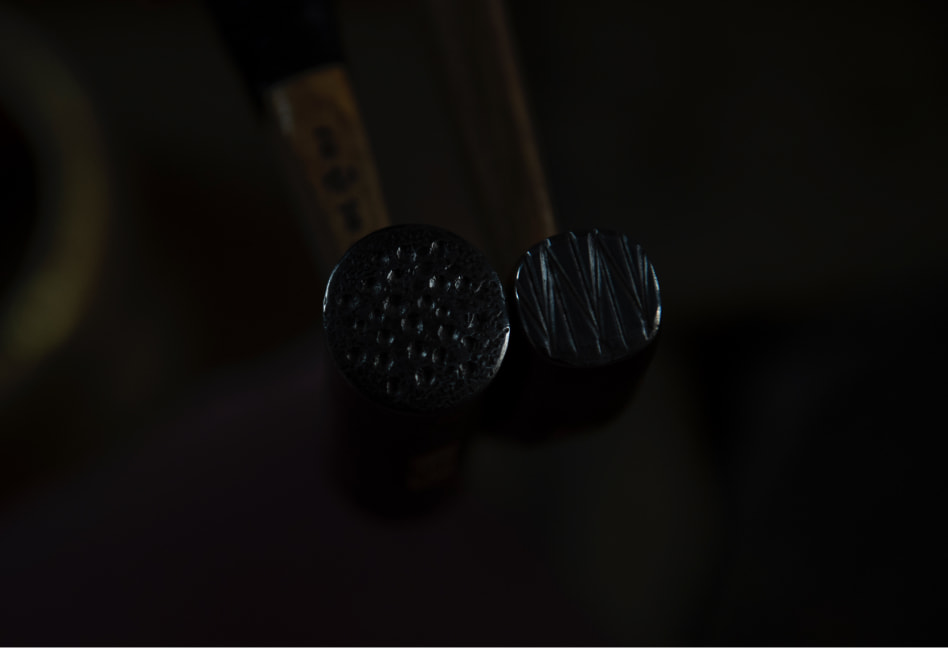
漆
本漆を使った塗りの工程では、拭き漆(ふきうるし)という技法で黒漆や生漆(きうるし)を塗り重ねます。槌目のあるお皿を綺麗に仕上げるために、独自の方法を見つけました。また、失敗しても削って塗り直すことはできないため、丁寧に慎重に作業を進めます。槌目のつけ方によって、塗り方、工程の順序も少し変わりますが、鍛木皿は表だけで黒漆を3回、裏を1回塗ります。金箔や銀箔はその上から箔を貼り、箔を少し削ることで黒漆がわずかに現れます。「たまゆき」や「さみだれ」は生漆を塗り重ねて自然な色合いに。漆は湿気で硬化するため、適度な湿度のある「風呂」で乾燥させ、最後にガラスコーティングを。一枚ごとに色の出方が違う美しい陰影の世界が、目の前に広がります。
In the lacquering process, black and raw lacquer are painted and polished in a technique called “fukiurushi.” We found an original way to beautifully finish our hammered plates. Since it is impossible to scrape and refinish if a mistake is made, the work is done with meticulous precision. The process and order differs depending on the base, though generally, three coats of black lacquer are applied to the front of aTanmokuzara, and one to the back. Gold or silver leaf are applied to the finished surface, then gently scraped to reveal the underlying black lacquer. Raw lacquer is used in “Tamayuki” and “Samidare” for a natural finish. Lacquer cures with moisture, so it is dried in a “bath” with moderate humidity, and when it has hardened, a final glass coating is applied. A world of unique beauty unfolds before your eyes with the changing shades and colors.
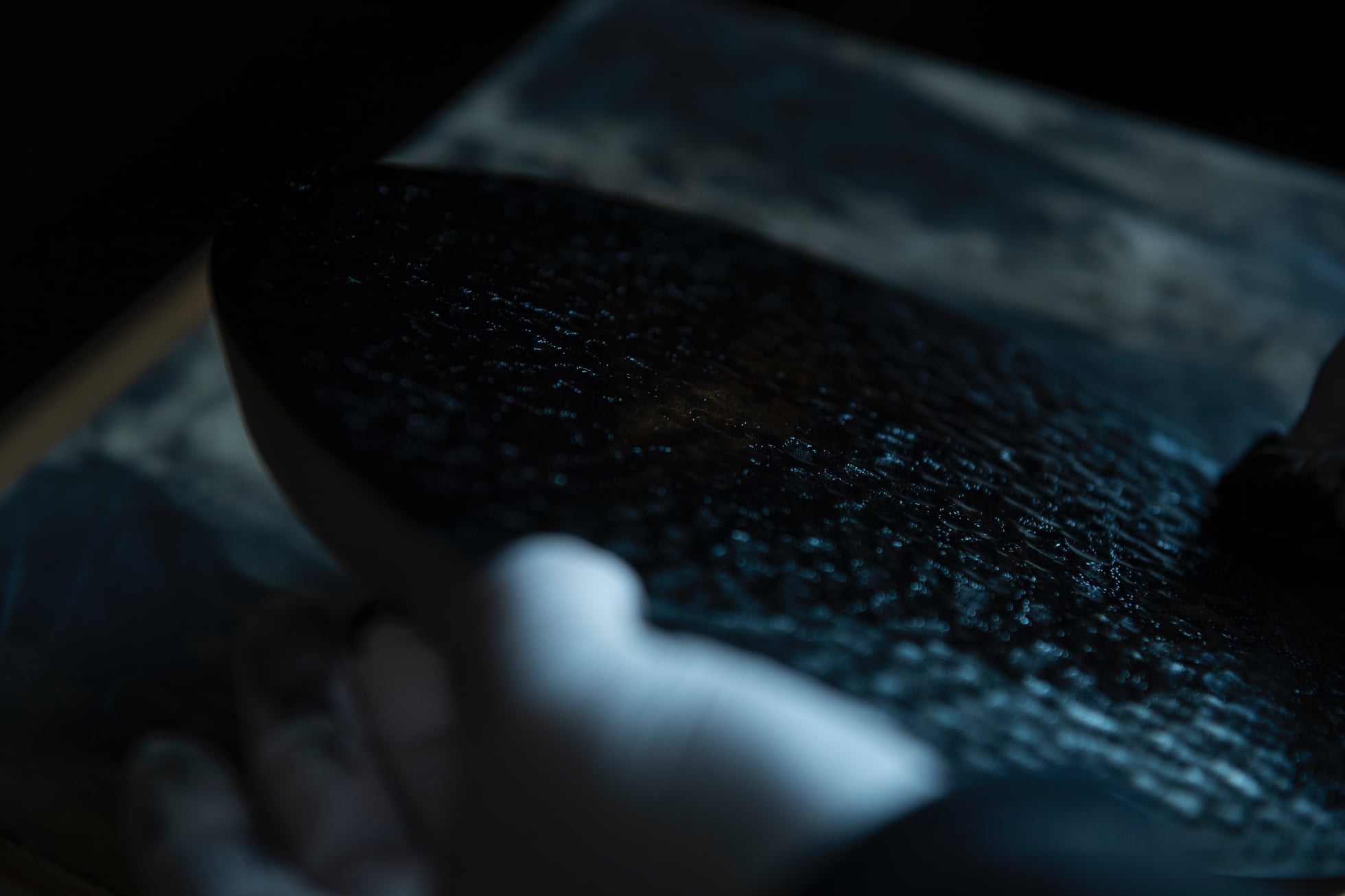
感
鍛木皿は、どの工程も失敗が許されず、プロの技の連携によって初めて一枚が仕上がります。樹齢100年のトチノキがもたらしてくれるゆったりとした時間の流れと重み、心豊かになれる木の温もり。木目を活かしてつけられ、繊細な陰影を生み出す多様な槌目。和食や洋食など、心を込めたお料理を、さらに素敵にしてくれる漆や箔の輝き。いずれも唯一無二の貴重な一枚ですが、誰もが気軽に使えるよう、荒らしの技やガラス塗装も施されています。例えば、一枚の鍛木皿にシンプルにお刺身を盛り付け、お猪口やグラスを一緒に添えるだけで、テーブルが一段と華やぎます。食以外にもお気に入りのものを飾るインテリアとしても使い方は多彩。あなたの感性で、鍛木皿をさらに育ててみませんか。
The process of creating Tanmokuzara does not allow for mistakes, and a single plate can be completed only through professional artisans bringing together their specialized skills. The warmth of the wood, and the calm, slow sense of time from the 100-year-old horse chestnut will enrich your heart. Working the grain of the wood with a mallet produces the delicate shading of Tanmokuzara. The elegant brilliance of the lacquer and the gold and silver leaf elevate any meal. Each piece is a one-of-a-kind work of art, but we applied careful finishing and a glass coating to allow anyone to use it easily. Simply plating sashimi onTanmokuzara and adding a sake cup or glass creates the perfect table setting. Tanmokuzara can also be used as a decorative object in interiors. Find your own way to continue the creative journey of Tanmokuzara according to your taste.
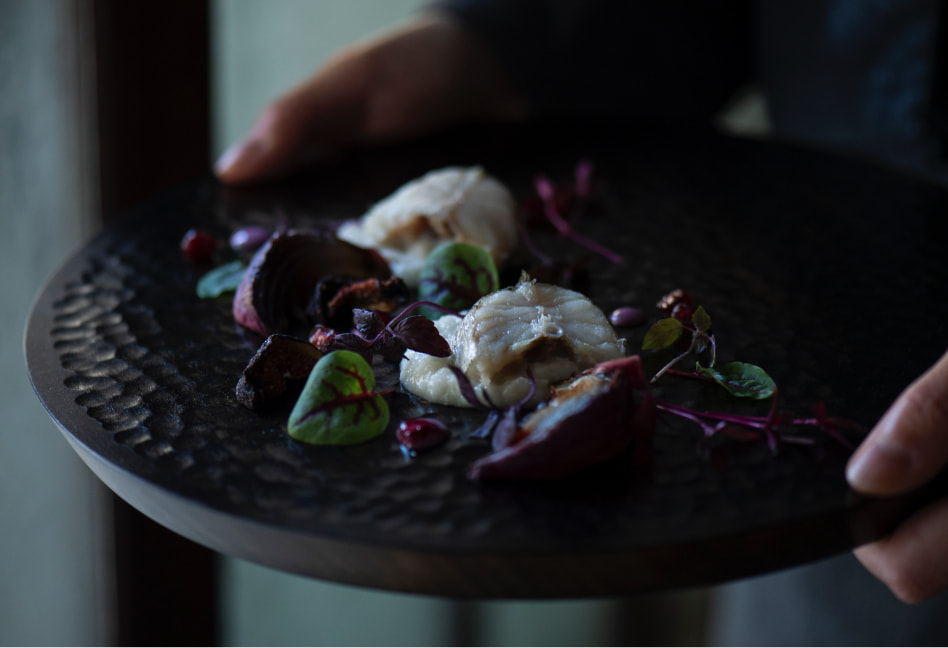
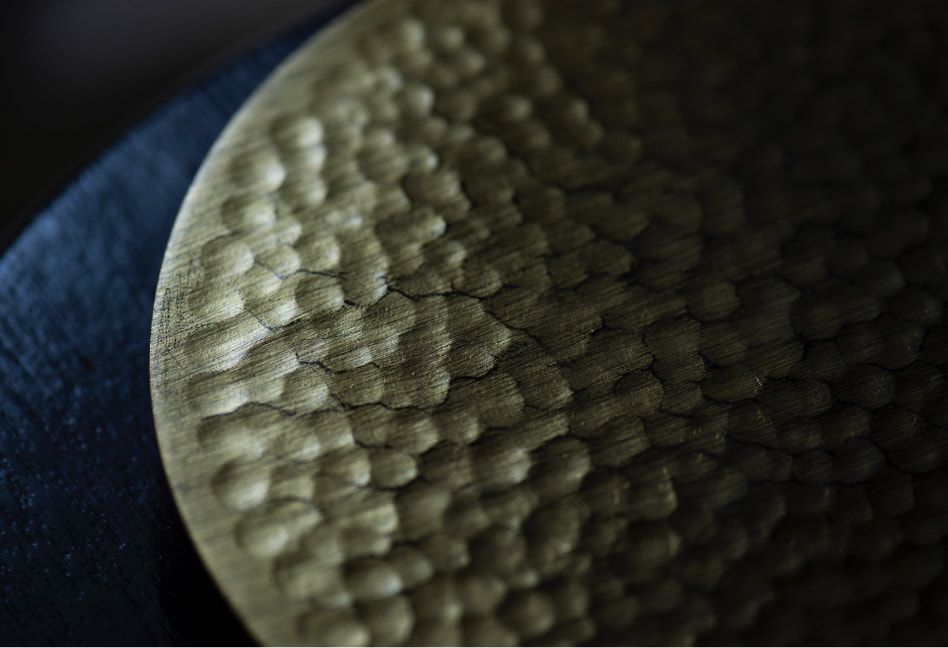
CRAFTSMAN
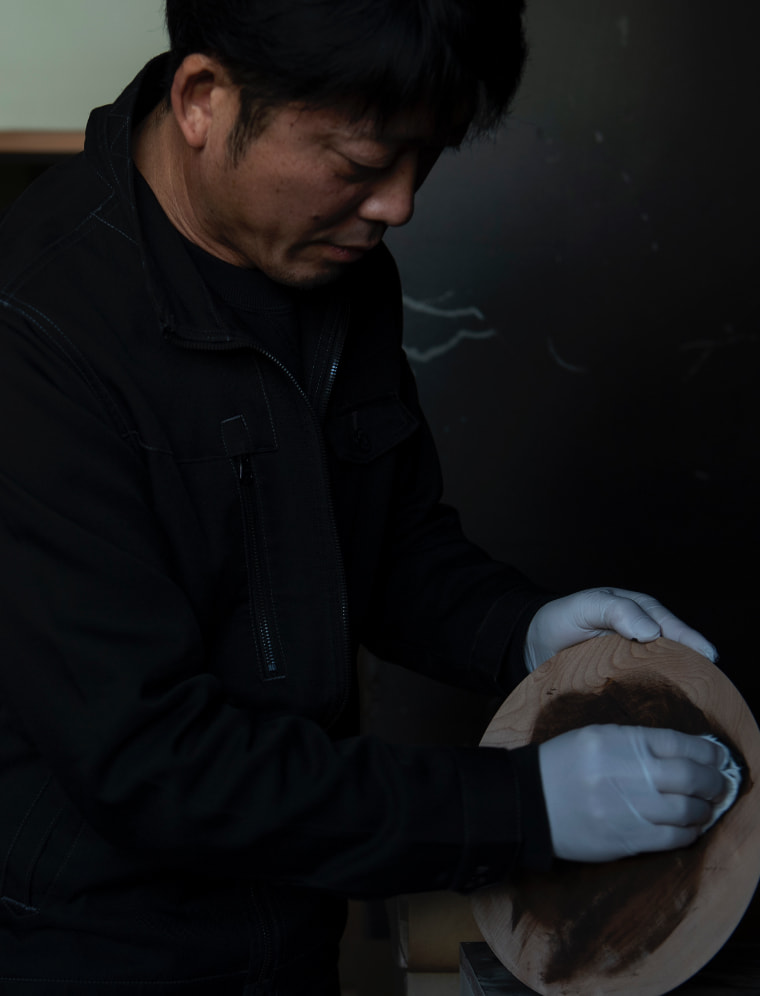
株式会社駒井漆器製作所
駒井 康亨
Yasuyuki Komai
祖父の代から続く、株式会社駒井漆器製作所を受け継ぐ。木地づくりから塗りまで、一貫した高い技術が同社の特徴であり、プロダクトデザイナーからの信頼も厚い。常日頃から信念とする「中途半端なものはいらない」という思いで、鍛木皿の開発に挑んだ。協力を仰ぐ澤田さん、島谷さんとは同学年で気の合う友人同士。澤田さんとの遊びの中で鍛木皿は誕生し、さらに磨かれていった。
Komai Yasuyuki inherited Komai Shikki Seisakusho which was founded by his grandfather. Making everything from the base to final lacquering, they are known for their advanced techniques, and are highly trusted by product designers. Komai developed Tanmokuzara with his philosophy: “nothing half-hearted.” Through experiments with his friend Sawada, Tanmokuzara was born and refined.
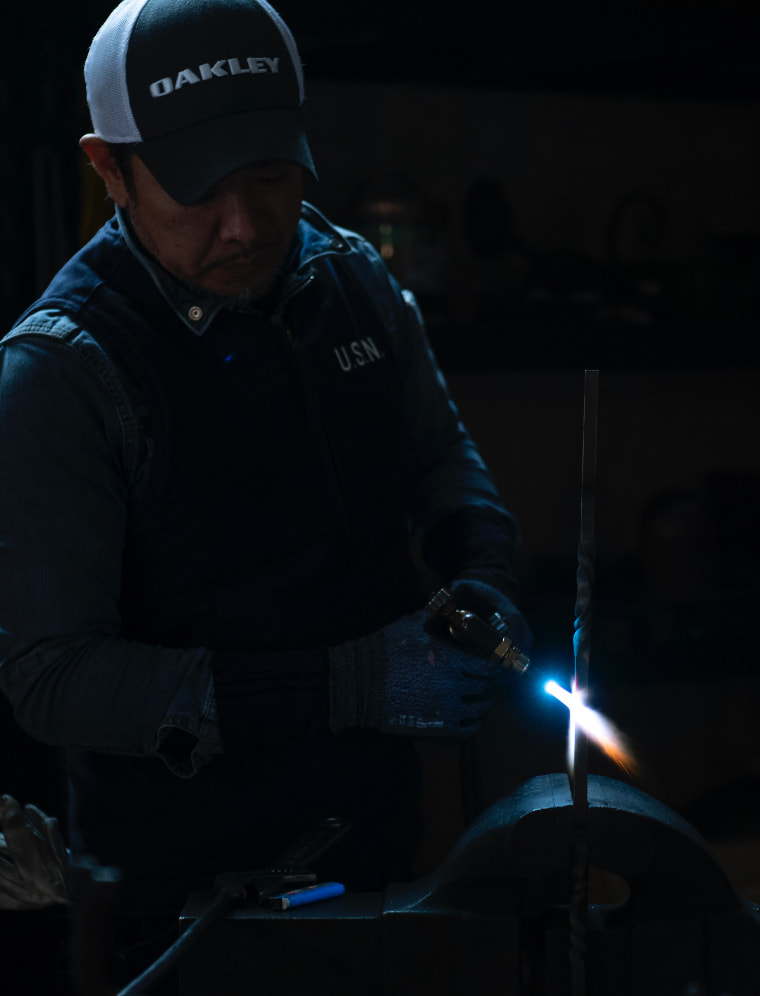
IRON CHOP
澤田 健勝
Kensho Sawada
鉄作家として「IRON CHOP」を設立。鍛造を中心に「すべては鉄のために」という創作スピリットのもと、デザイン・制作。「いいものは一生残り、素材を大切にできる。自分にしかできないことを」と、皇居、知恩院、金沢城、ホテル、住宅等の装飾金物やオブジェなどを多数手掛ける。2010年伊丹国際クラフト展準グランプリ。第51回日本クラフト展招待審査員賞、2011高岡クラフトコンペ・マテリアル賞など。
Sawada Kensho, founder of IRON CHOP, designs and creates forged products. He has provided pieces to hotels and residences, the Imperial Palace, Chionin Temple, and Kanazawa Castle, and has won awards including the Itami International Craft Exhibition Semi-Grand Prix, Japan Craft Exhibition Invited Judges Award, and the Material Award at the Takaoka Craft Exhibition. “Quality lasts a lifetime, cherish materials, and do what only you can do” is his philosophy.
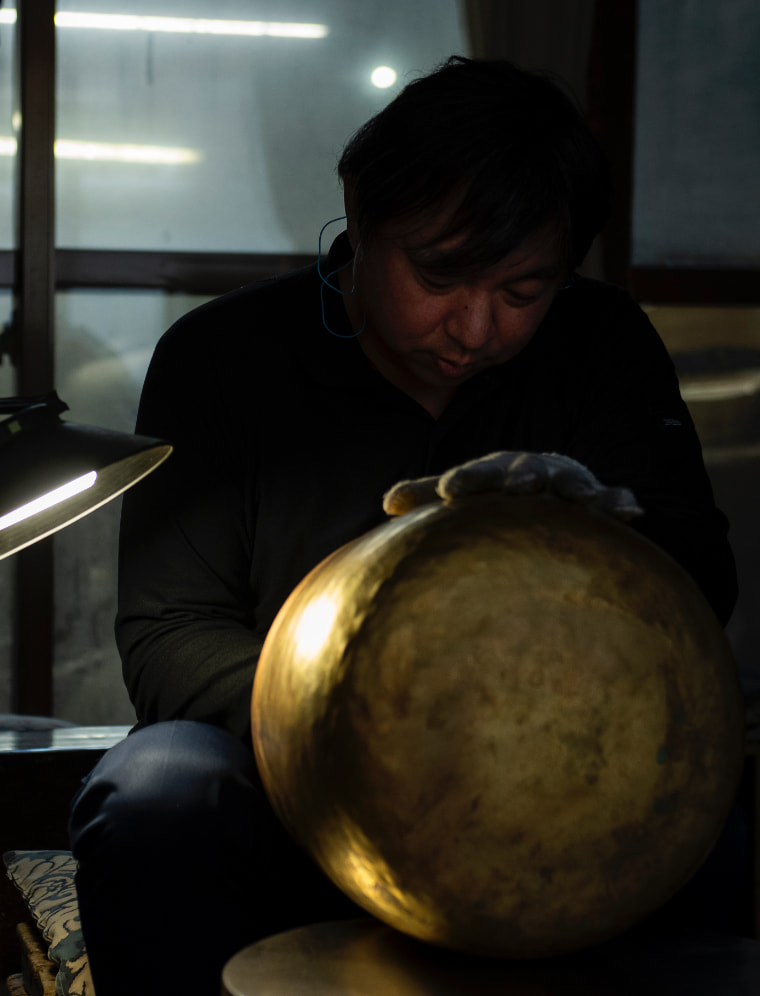
シマタニ昇龍工房
島谷 好徳
Yoshinori Shimatani
400年の歴史がある高岡銅器。江戸後期から続く寺院の鏧子(けいす)、おりん職人の家で育った初代和吉が、明治42年に創業。島谷さんは、おりんづくりの伝統技法を世界各地で実演するなかで、おりんの音の癒しは万国共通と実感。さらに、鍛金の技を生かし、錫100%で自由に形を変えられる「すずがみ」を開発し、国内外で販売する。「丁寧な仕事の積み重ねが、人の心を動かす」と語る。
Takaoka copperware has a 400 year history. Shimatani’s business was founded in 1909 by Kazuyoshi who made keisu for temples since the late Edo period. Shimatani demonstrates the traditional techniques of Orin-craft around the world. Using his forging skills, he also developed “suzugami”, made of 100% tin which can be shaped freely and is now sold both domestically and abroad. He says “careful work moves people’s hearts.”